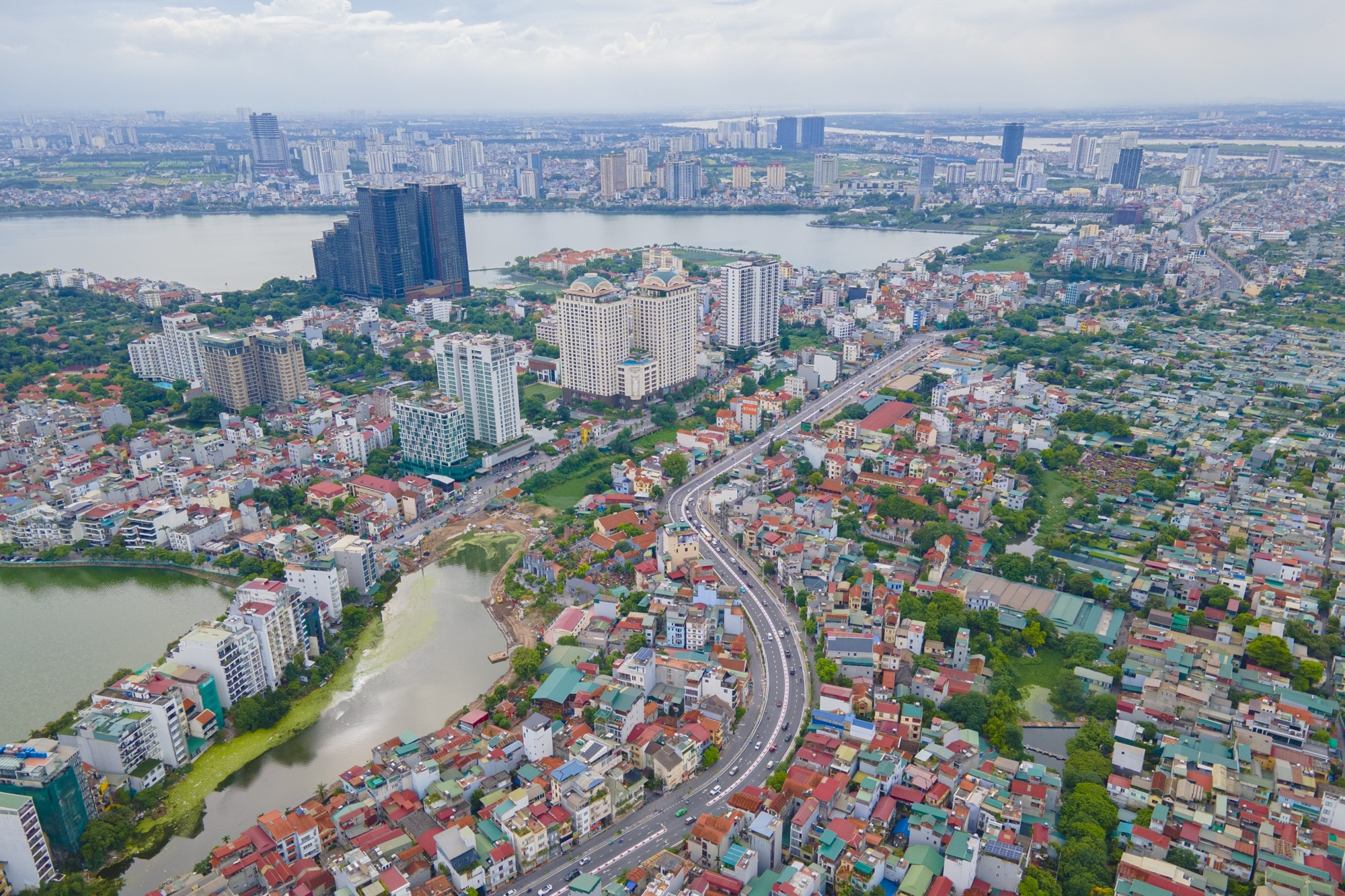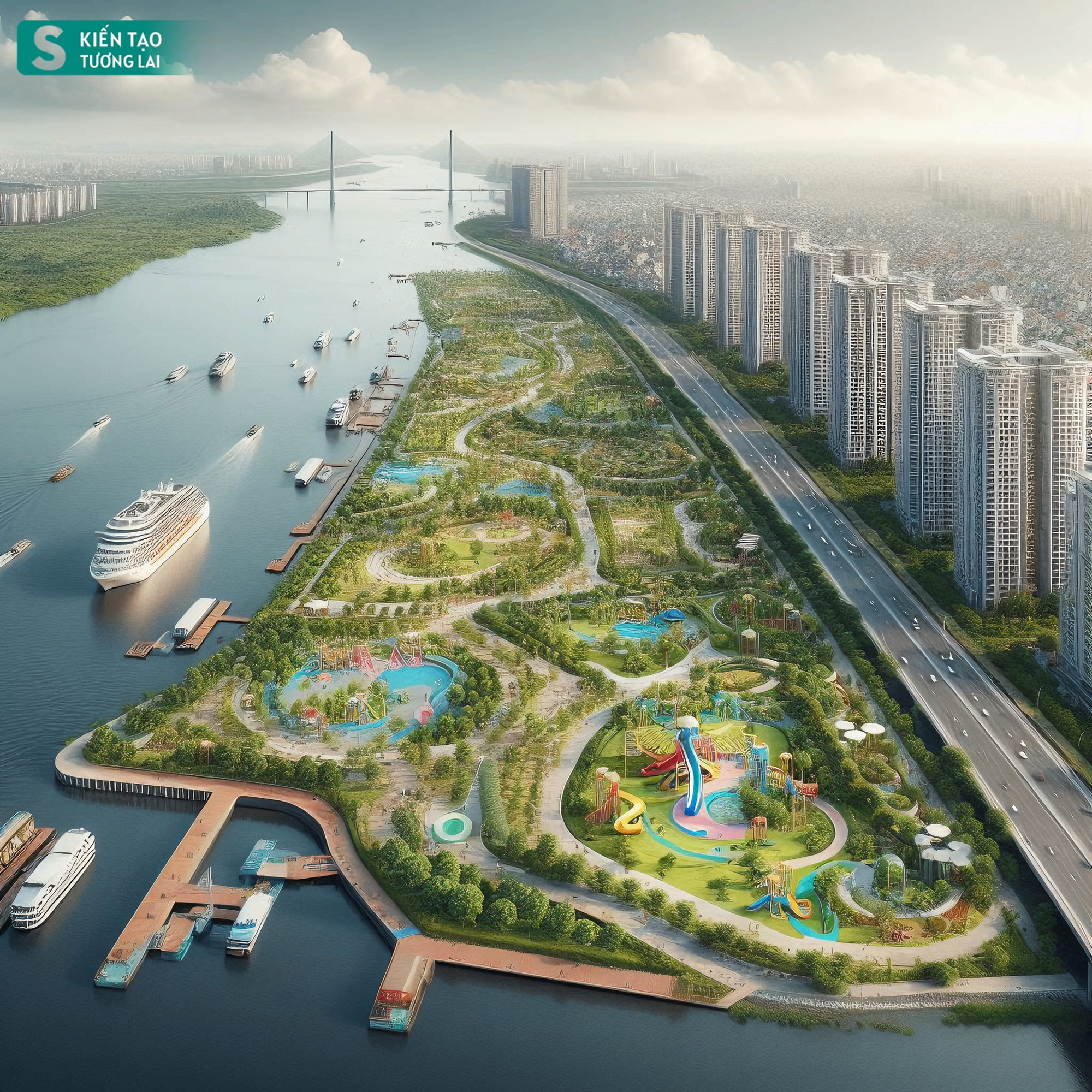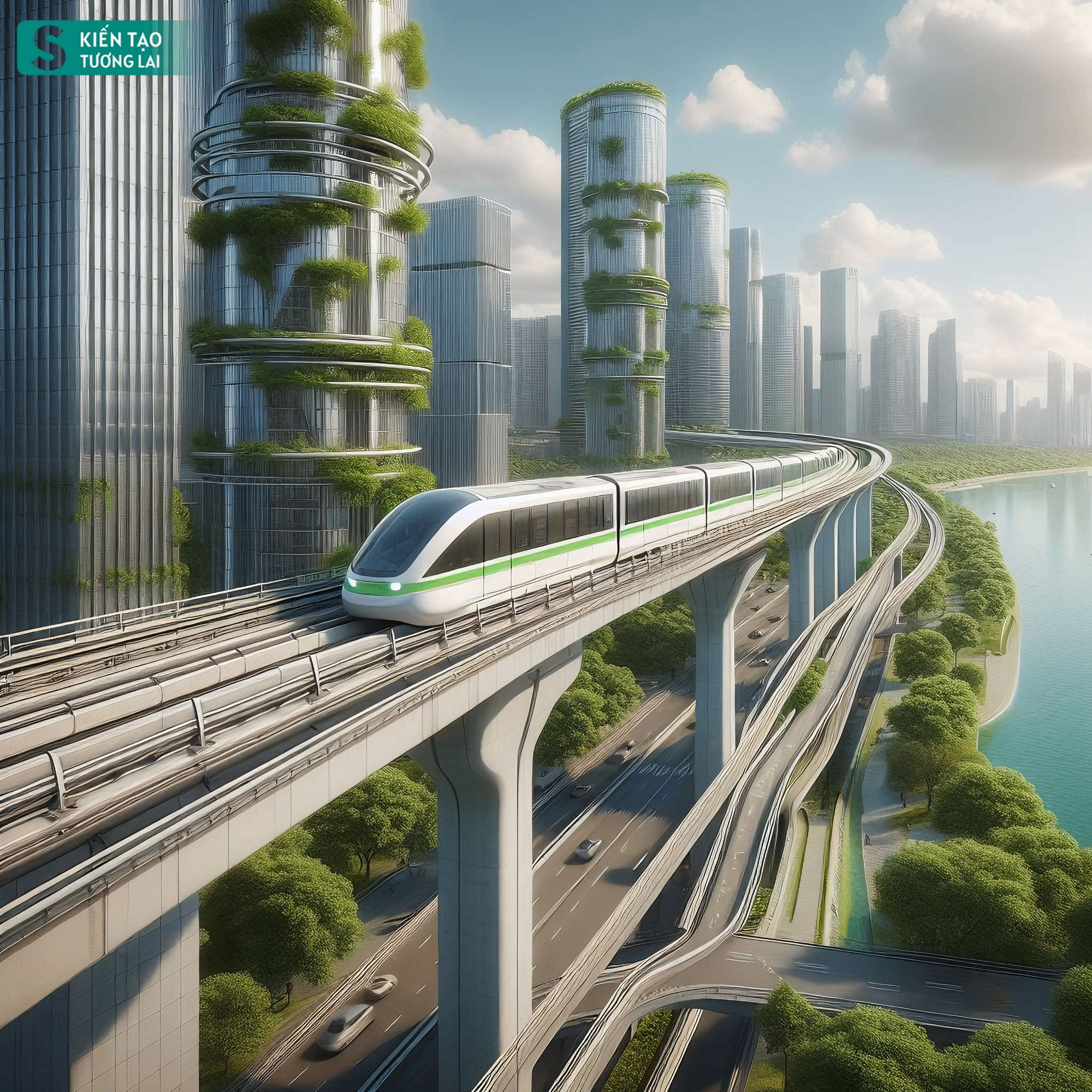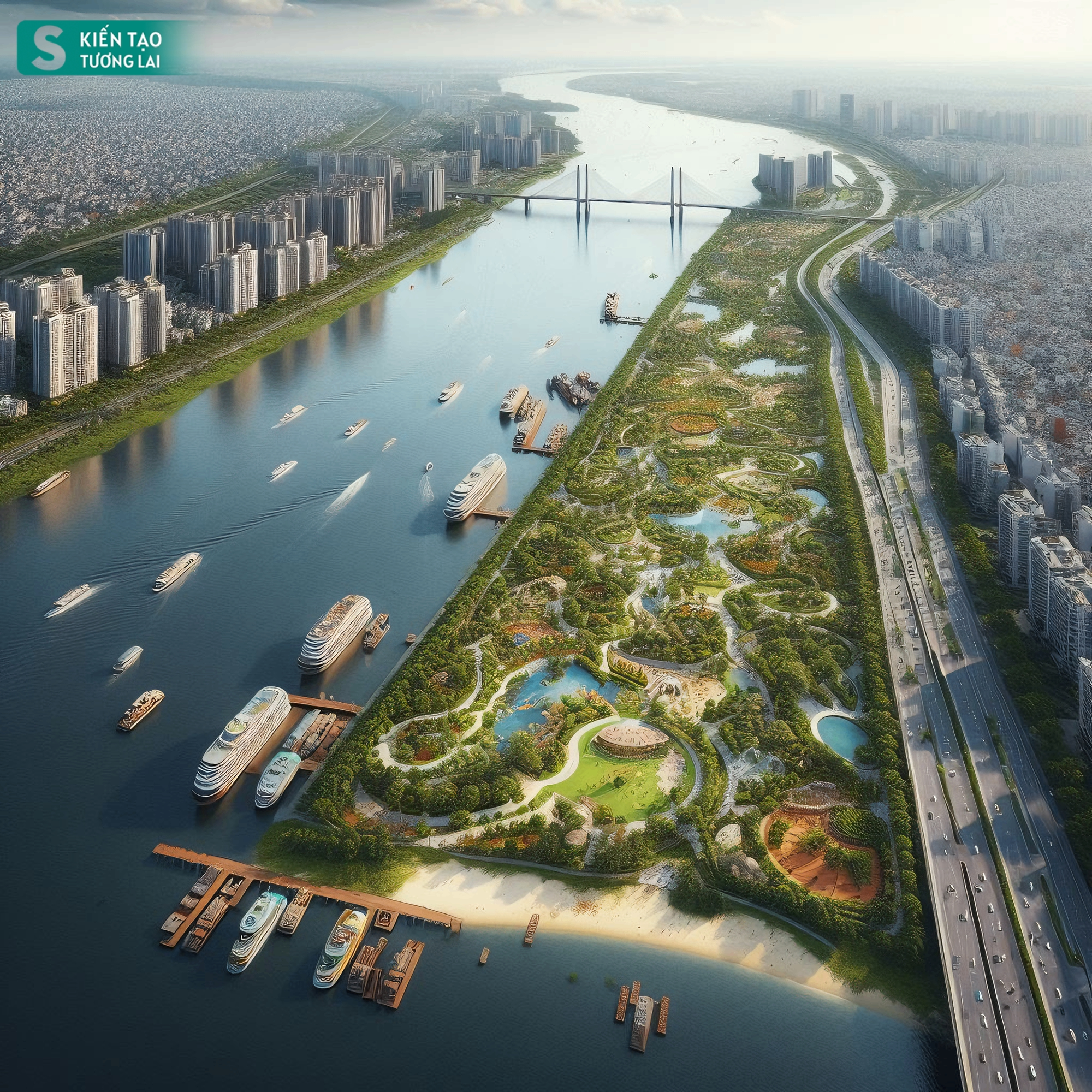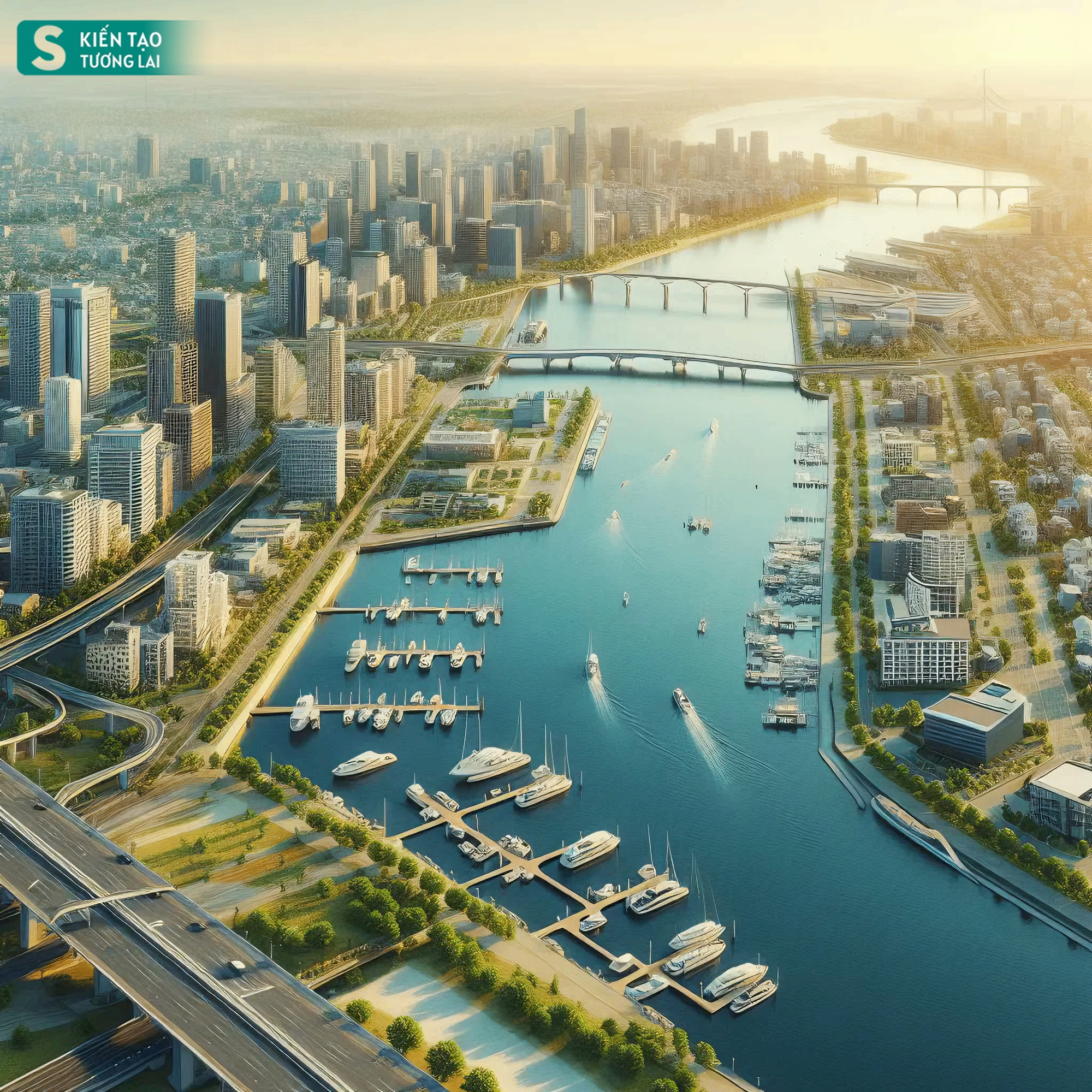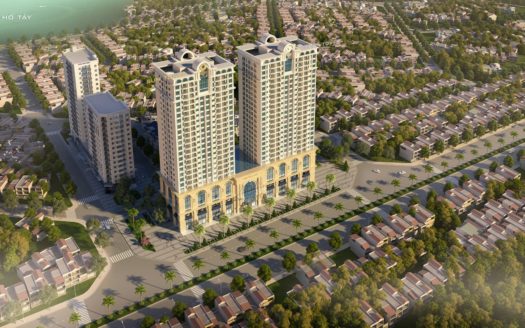Hanoi’s Red River Before The 300-trillion-VND Mega Boulevard
Although Hanoi has built up to nine bridges connecting both sides of the Red River, the infrastructure on each side remains uneven, leading to significant disparities in real estate prices. The Hanoi People’s Committee has recently established a task force to oversee planning, architectural development, and the study and implementation of the Red River landscape boulevard project. Mr. Duong Duc Tuan, Vice Chairman of the Hanoi People’s Committee, has been appointed as the head of the task force, which includes leaders from various departments and sectors.
Miracle Change of Red River Banks
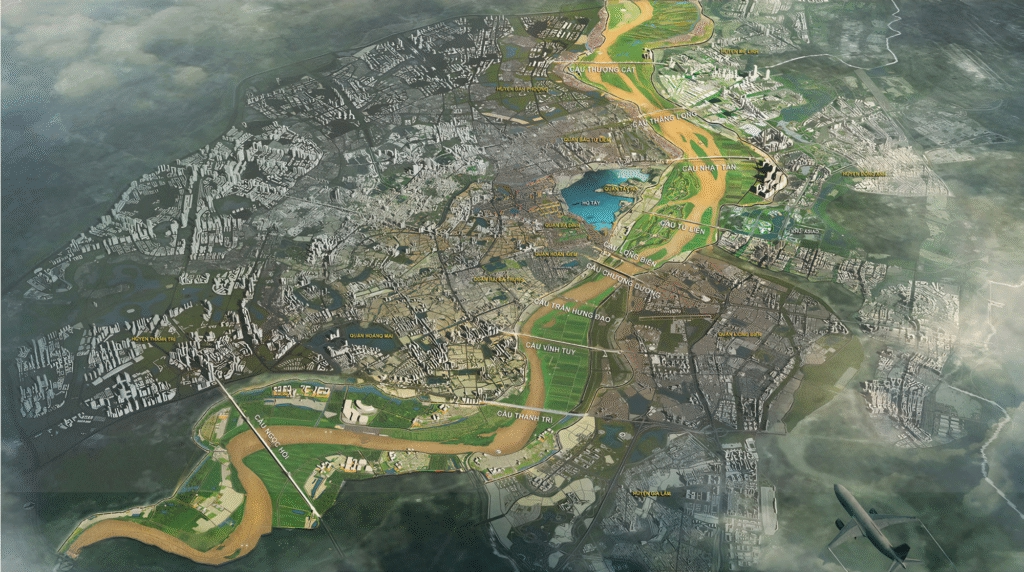
Accordingly, with a total estimated investment of 300 trillion VND, the project will feature an 80-kilometer-long boulevard running along both sides of the Red River, stretching from Hong Ha Bridge to Me So Bridge. The boulevard will include 67 kilometers of modern elevated roads and 10 kilometers of tunnels under the bridges with six traffic lanes. In addition, a monorail line with a total length of about 84 kilometers — including 82 kilometers of elevated tracks and 2 kilometers of underground sections — will also be developed.
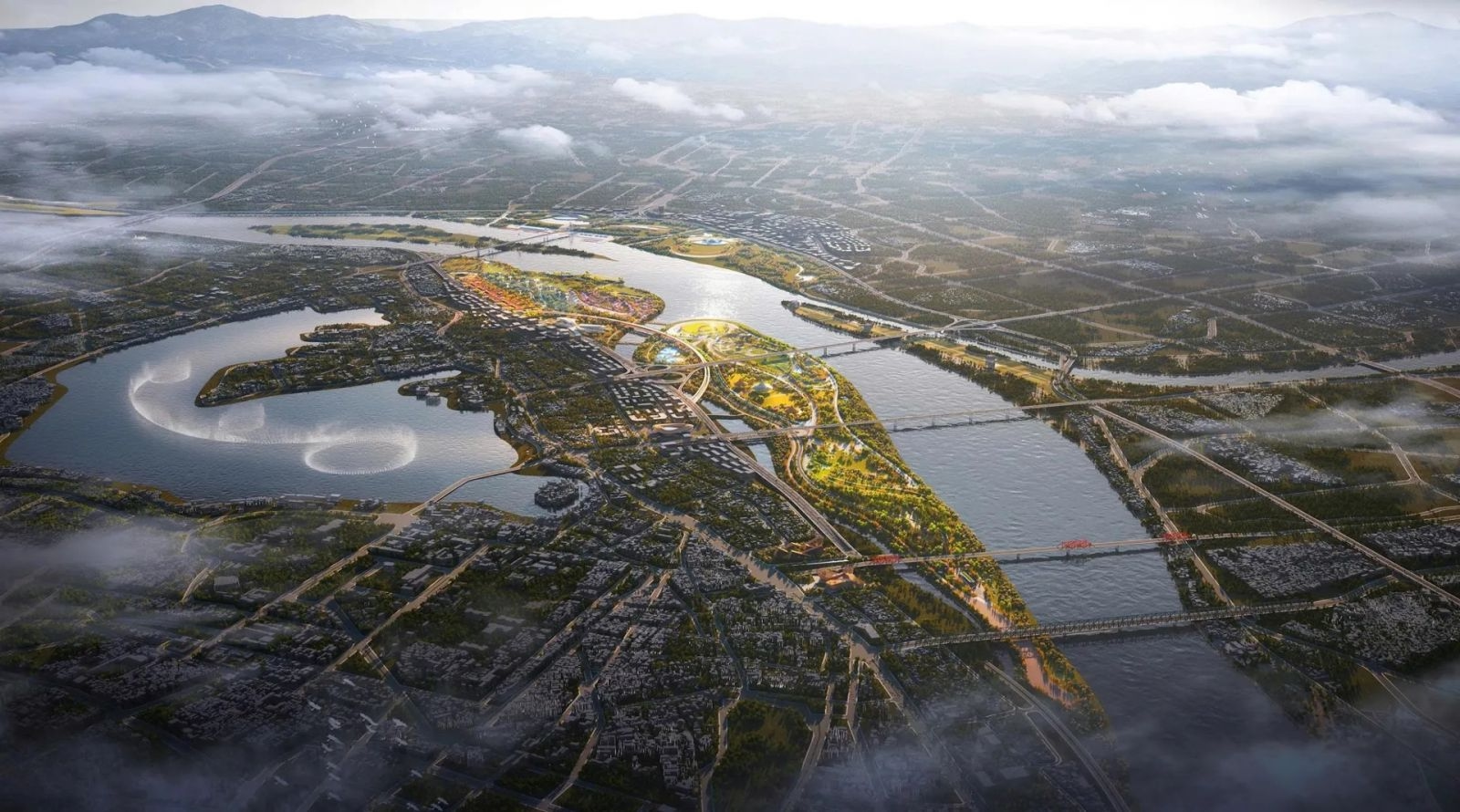
The project also allocates about 3,300 hectares for green spaces, eight parks, and public areas, turning the riverside into a distinctive landscape highlight for tourism and services. The goal is to transform the Red River area into a landmark destination — a “Red River Miracle” — gradually addressing the long-standing issue of the city “turning its back on the river.”
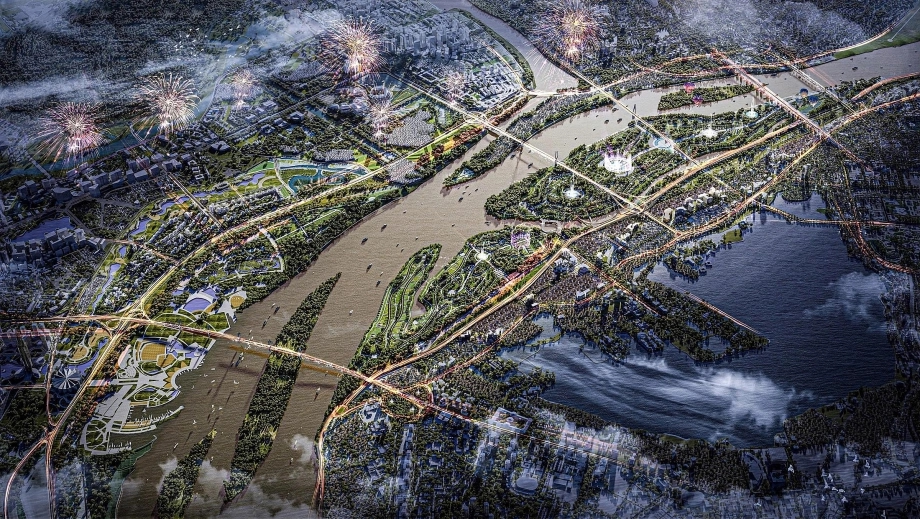
The consortium of Deo Ca Group and Van Phu Invest has been approved by the Hanoi People’s Committee to study and propose the Red River Boulevard and landscape project under a public–private partnership (PPP) model, specifically a build–transfer (BT) contract. After more than two months of research, the consortium submitted a preliminary study report to the city in August. With the participation of experienced infrastructure developers like Deo Ca Group, leading real estate developers such as Van Phu Invest and MIK Group, and financial support from VPBank, the Red River Landscape Boulevard project is expected to begin construction soon — marking a new “Red River Miracle” for Vietnam.
AI-generated images depicting the envisioned future city along the Red River
Current Status of The Red River Area and Real Estate Prices
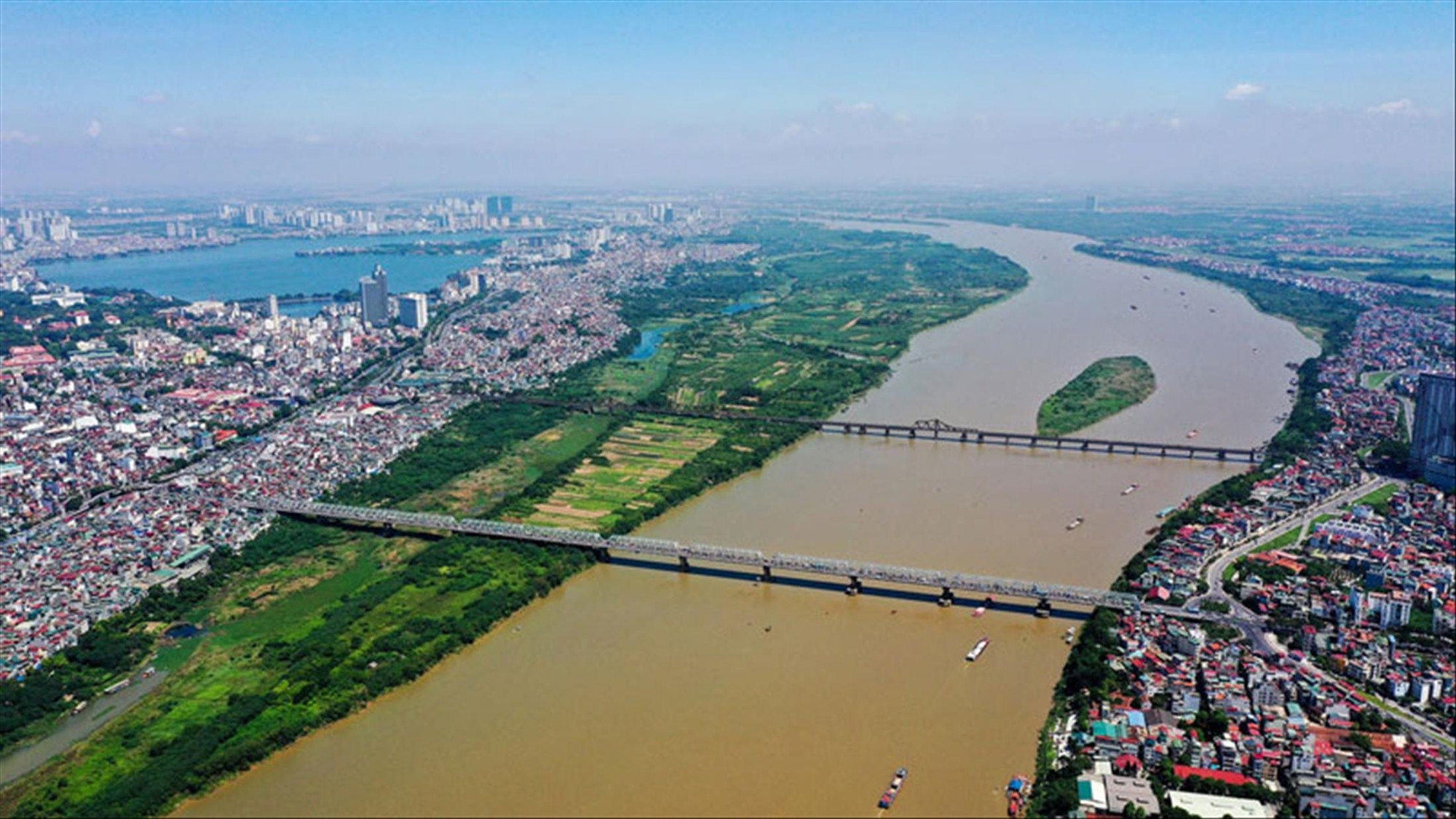
The Red River urban zone spans 40 km from Hong Ha to Me So Bridge, covering 55 wards across 13 districts with nearly 11,000 ha. About one-third is river surface, half is floodplain, and the rest includes long-established villages like Bat Trang, Van Khe, and Quang An.
Despite its vast potential, the area remains underused — much of it occupied by low-value crops or encroached for workshops and temporary housing. In several spots, especially around An Duong, Dong Ngac, and Phuc Xa, informal settlements and makeshift homes have formed along the riverbanks, creating pockets of poverty beside Hanoi’s central districts.
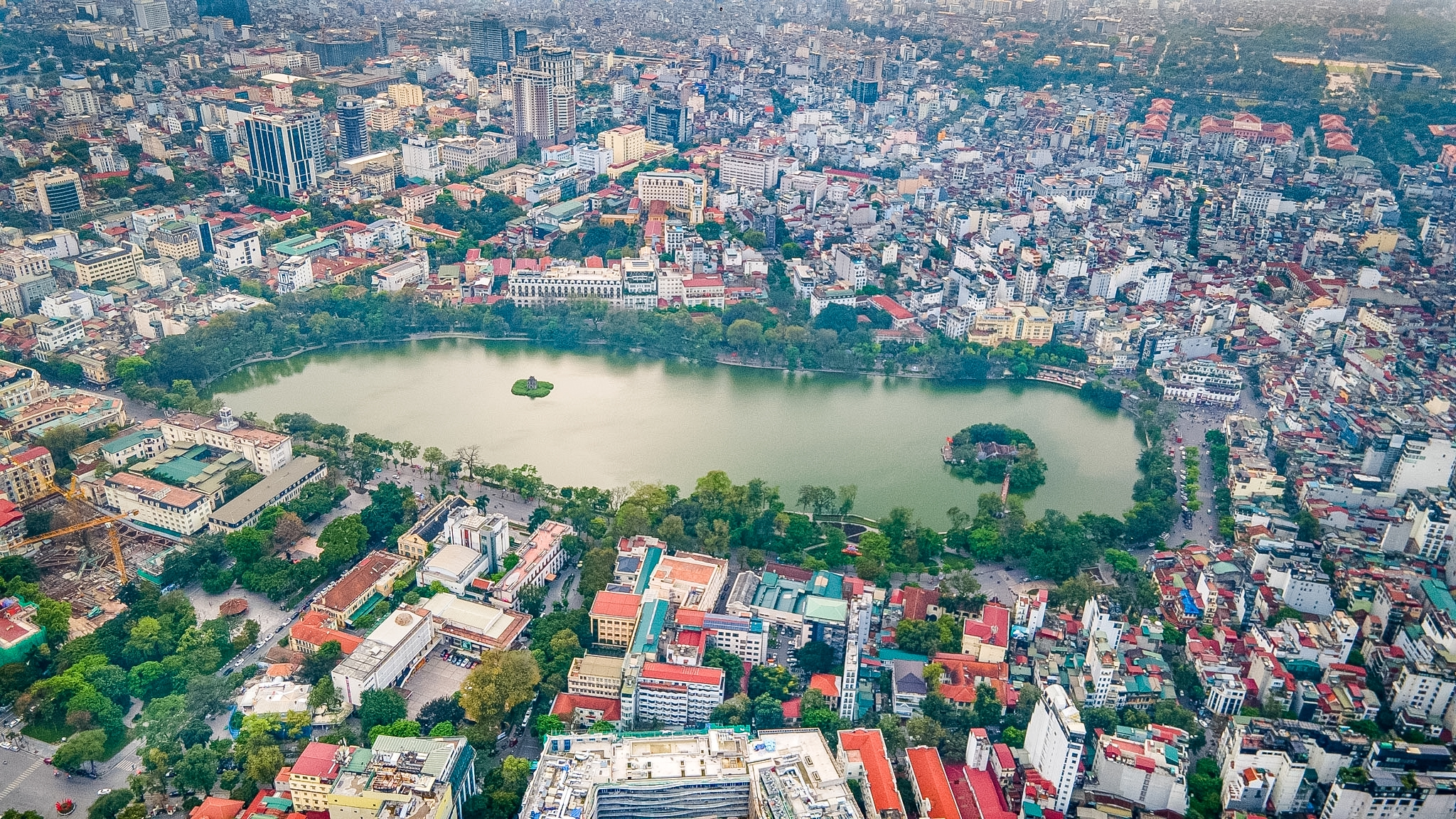
According to Batdongsan.com, townhouse prices in Hoan Kiem often exceed 1 billion VND per square meter, reaching nearly 2 billion VND/m² in areas like Hang Ngang and Hang Dao. In contrast, in Long Bien — around Aeon Mall or Co Linh Street — the highest land prices are just over 400 million VND/m².
